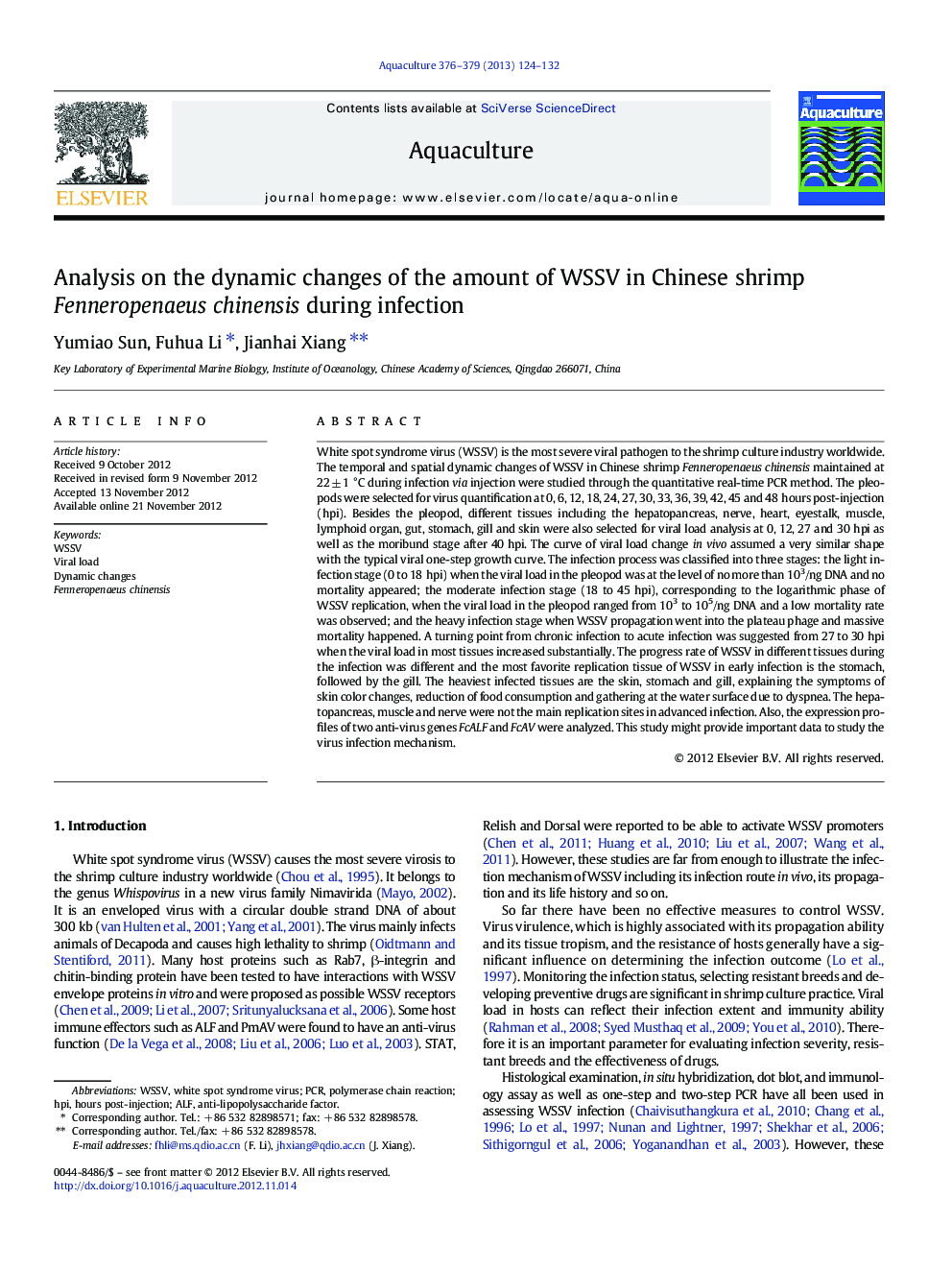| کد مقاله | کد نشریه | سال انتشار | مقاله انگلیسی | نسخه تمام متن |
|---|---|---|---|---|
| 2422227 | 1552879 | 2013 | 9 صفحه PDF | دانلود رایگان |

White spot syndrome virus (WSSV) is the most severe viral pathogen to the shrimp culture industry worldwide. The temporal and spatial dynamic changes of WSSV in Chinese shrimp Fenneropenaeus chinensis maintained at 22 ± 1 °C during infection via injection were studied through the quantitative real-time PCR method. The pleopods were selected for virus quantification at 0, 6, 12, 18, 24, 27, 30, 33, 36, 39, 42, 45 and 48 hours post-injection (hpi). Besides the pleopod, different tissues including the hepatopancreas, nerve, heart, eyestalk, muscle, lymphoid organ, gut, stomach, gill and skin were also selected for viral load analysis at 0, 12, 27 and 30 hpi as well as the moribund stage after 40 hpi. The curve of viral load change in vivo assumed a very similar shape with the typical viral one-step growth curve. The infection process was classified into three stages: the light infection stage (0 to 18 hpi) when the viral load in the pleopod was at the level of no more than 103/ng DNA and no mortality appeared; the moderate infection stage (18 to 45 hpi), corresponding to the logarithmic phase of WSSV replication, when the viral load in the pleopod ranged from 103 to 105/ng DNA and a low mortality rate was observed; and the heavy infection stage when WSSV propagation went into the plateau phage and massive mortality happened. A turning point from chronic infection to acute infection was suggested from 27 to 30 hpi when the viral load in most tissues increased substantially. The progress rate of WSSV in different tissues during the infection was different and the most favorite replication tissue of WSSV in early infection is the stomach, followed by the gill. The heaviest infected tissues are the skin, stomach and gill, explaining the symptoms of skin color changes, reduction of food consumption and gathering at the water surface due to dyspnea. The hepatopancreas, muscle and nerve were not the main replication sites in advanced infection. Also, the expression profiles of two anti-virus genes FcALF and FcAV were analyzed. This study might provide important data to study the virus infection mechanism.
► The viral load changes in vivo throughout the whole infection course are studied.
► The progress rate of WSSV in different tissues is different.
► The immune gene expression profiles are associated with viral load changes.
► Two indexes signaling the infection outcome for early warnings are proposed.
Journal: Aquaculture - Volumes 376–379, 15 February 2013, Pages 124–132